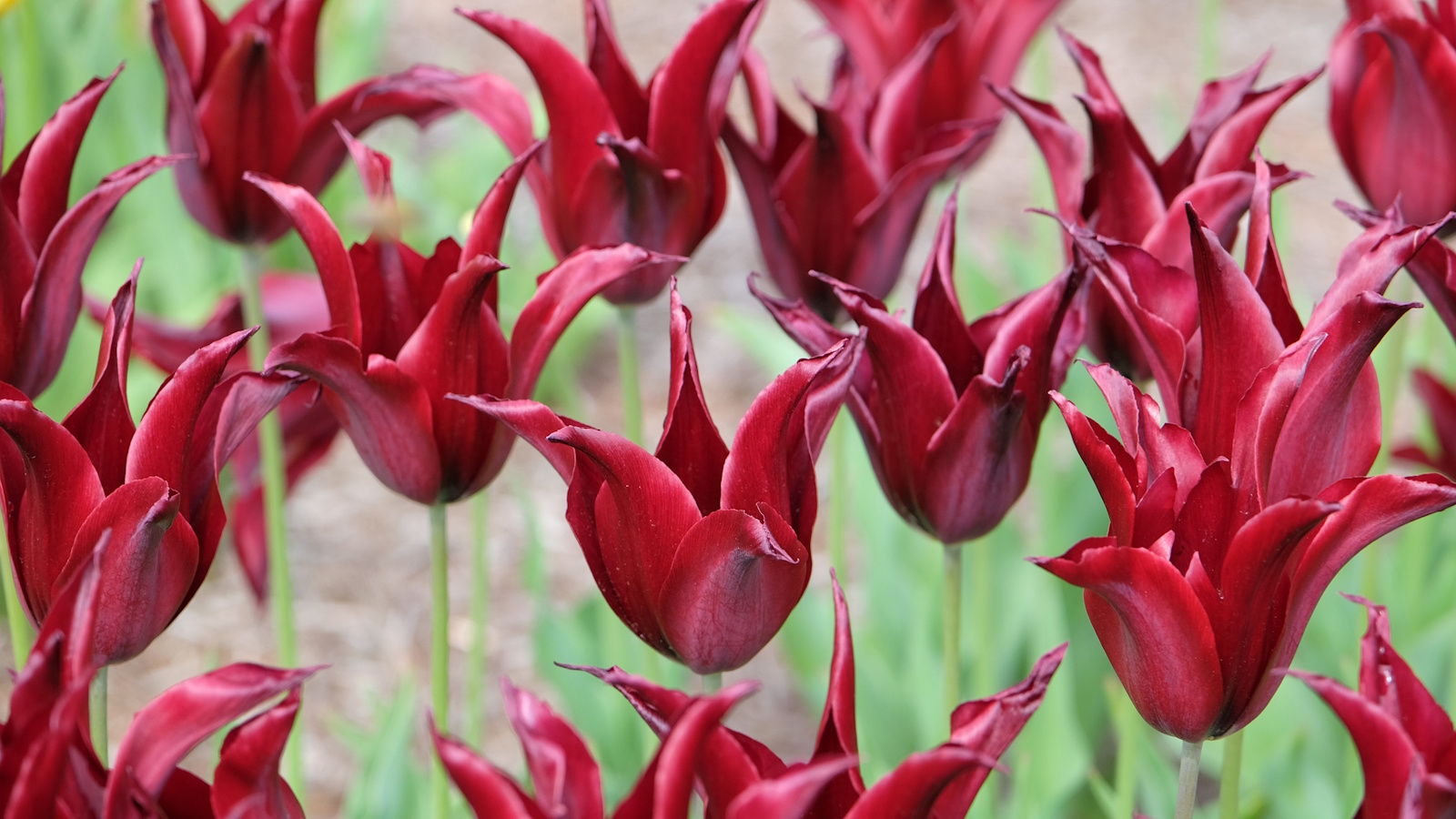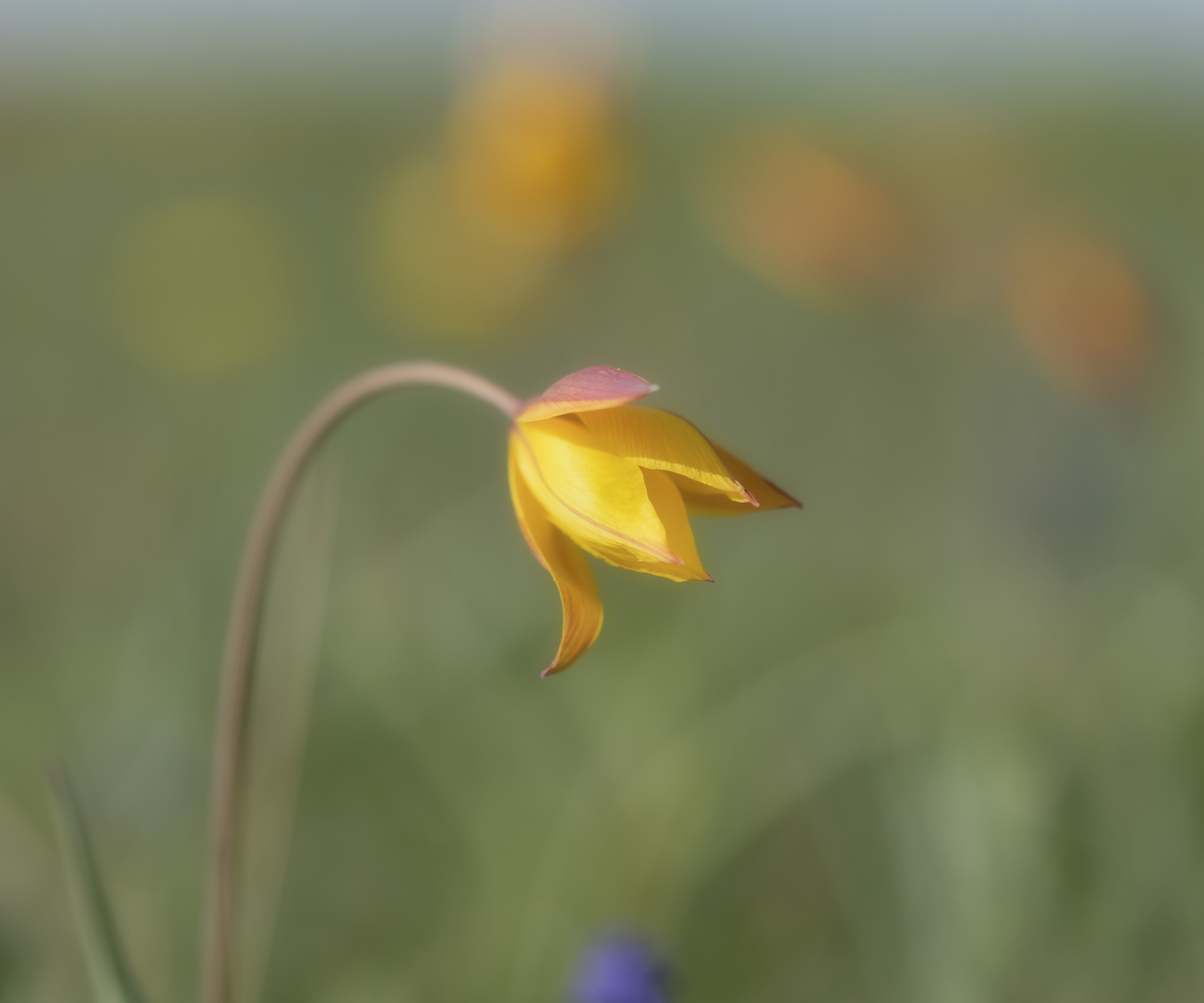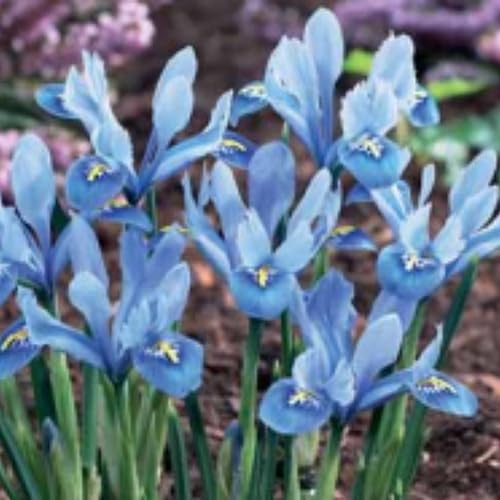I have planted thousands of tulips and daffodils as a professional gardener – and these are the bulb planting trends that will dominate in 2025
Stay ahead of the curve by incorporating some of these bulb planting trends in your yard


Bulb planting is an important job on the annual gardening calendar. Whether you have a charming cottage garden or a modern townhouse yard, bulbs can be used to great effect to elevate your space. Whatever the theme, style, or look of your yard, flowering bulbs add seasonal interest and flair, enabling you to add something new or different to your plot.
As a former professional gardener, I have planted many thousands of bulbs in public and private gardens across the UK and Italy. While some looks prove timeless, for example, almost-black 'Queen of Night' tulips planted alongside peach-red 'Menton' tulips, some combinations or varieties grow tired and lose popularity. As gardeners, we have the power to grow what we like depending on tastes and trends, and adding something new, I think, can have a transformative effect.
This year, bulb planting trends are reflecting a shift towards thoughtful combinations using bright and brilliant colors, old-fashioned varieties and perennial species, as well as wildlife-friendly options to keep pollinators happy. So, keep on top of bulb planting trends and avoid bulb planting mistakes this year. Our guide has all the information you need to know.

For an unusual bulb, try planting the orange crown imperial fritillary, Fritillaria imperialis, which is sure to make a statement in the border
Bulb planting trends 2025
These are the bulb planting trends for 2025 and for good reason. Color and contrast are in vogue, as well as bee-friendly blooms and perennial species that will return year after year. So, if you have already done your homework on winter garden trends, here are some flowering bulb ideas to think over, including many unusual bulbs and miniature bulbs for the wow factor.
1. Plant bulbs that support wildlife

Narcissus poeticus, or the pheasant's eye daffodil, has pure white petals with a rich yellow eye that is easily accessible for pollinators
Wildlife garden ideas will continue to play an important role and determining factor in how we all tend to and care for our outdoor spaces. This is less of a trend and more of a permanent change, I think. One quick way to learn how to boost biodiversity is to use single-flowering bulbs, which have far easier access to nectar for pollinators such as bees and butterflies.
Many of the best varieties of narcissi bulbs are single-flowering, helping gardeners create a space that will support and feed local insects, such as Narcissus poeticus, otherwise known as the 'Pheasant's Eye' daffodil, seen in the image above.
'The 'Pheasant's Eye' daffodil is a classic single-flowering scented bulb to grow that will not disappoint,' says Vanessa Elms, bulb expert and owner of Old House Gardens, based in Ann Arbor, Michigan. 'With prolonged pure-white blooms, 'Pheasant's Eye' is one of the best bulbs for naturalizing in a lawn or borders, although this species is not tolerant of clay soils, so avoid planting in heavy soil regions.'
Design expertise in your inbox – from inspiring decorating ideas and beautiful celebrity homes to practical gardening advice and shopping round-ups.
As with most daffodils, this species is fully hardy and can be grown even in cooler US hardiness zones 3, 4 and 5. 'Pheasant's Eye' bulbs are available to order online from Walmart.
For single-flowering bulbs for a pot, Vanessa recommends Narcissus 'Avalanche', which has a superb fragrance in spring. Another option would be Narcissus 'Minnow', which is a dwarf variety with up to five fragrant single-flowers per stem that pollinators will flock to. Narcissus 'Minnow' bulbs are available to order from Amazon.

Vanessa Elms is a horticulturist and the owner of Old House Gardens, a business based in Michigan and devoted entirely to heirloom bulbs, many available nowhere else, and an international leader in the preservation of these fabulous relics.
2. Maximalism and clashing colors will add impact

Tulips come in a range of colors, and planting bold shades together in borders or pots will create an impactful display
Big, bold colors and maximalist schemes have made a comeback in recent years, and look set to stay for the foreseeable. If you are wondering what is maximalism, I think this aesthetic is best described as colorful, happy and joyful. Think orange, red, pink and purple, clashing colors and patterns all thrown together, without any sense of holding back.
Gardeners can embrace this trend too, pairing bright tulips, hyacinths and alliums together in showstopping, firework-like displays that are full of rich tones. As you can see in the image above, pairing bold shades together is sure to add impact to container displays. I took this photo when working in a private country garden in the UK, and long-lasting colorful tulip displays can always be relied upon.
There are many different tulip types, including fringed tulip varieties and parrot tulips, and whatever you pick will look impressive, so long as you plant them in well-draining soil in a sunny spot.
If you are anything like me and you enjoy the Venetian aesthetic, combining purples, oranges and pinks, why not learn how to create a bulb lasagna and combine many different varieties in one pot? Try planting Tulipa 'Ballerina', Tulip 'Negrita Parrot', Tulipa 'Queen of Night' and Tulipa 'Salmon Impression' all together for a warm, intense display on your terrace next spring.
'Queen of Night' tulip bulbs are available to order from Walmart and can be planted through until December.
3. True blue bulbs will create a cool, calm look

Understates and unusual, grape hyacinth 'Valerie Finnis' is the perfect pick for a cool and calm space
Pale blue and teal plants have gained a significant amount of attention in recent months since being named by the American Garden Media Group as the color of the year for 2025.
If you are looking for flower bed ideas and want to try something unusual, consider adding some blue flowering bulbs to add a cooling, calming atmosphere to your spring displays.
There are several varieties of blue flowers that you can grow, such as pale blue Camassia cusickii, with star-like blooms opening atop tall stems, or for a dwarf option for smaller pots, opt to grow Iris reticulata 'Alida', with blue falls complemented by a golden-yellow center.
One true-blue plant that I grew when working at the Garden Museum in Central London was the 'Valerie Finnis' grape hyacinth, or Muscari armeniacum 'Valerie Finnis', as seen in the image above that I took when completing my horticultural traineeship. This variety will grow no taller than 10 inches in height, with flowers opening in the springtime. 'Valerie Finnis' bulbs are available from Walmart.
As with all smaller or dwarf varieties and species, it is best to plant on mass, with many bulbs planted in one pot or close together in borders. Planted alone, these subtle, pale blooms will get lost when competing against other brightly colored springtime blooms.
4. Plant perennial bulbs in meadows, borders and lawns

The snake's head fritillary, Fritillaria meleagris, is one impactful option to plant in lawns and meadows
Longevity in the garden is important. As gardeners, knowing that what you are planting is an investment that will pay off for many years to come is both satisfying and sustainable. For this reason, planting high-impact bulbs that will naturalize in lawns and borders is a good idea.
There are many perennial bulbs that can achieve this, including croci, daffodils and snowdrops. If you are planting in a lawn area, just be sure not to mow your lawn until the summer, giving the bulbs plenty of time to store energy to help them return the following year.
If you are wondering how to plant a bulb lawn and enjoy a jewel-like meadow aesthetic, try planting white snowdrops, yellow croci and purple snake's head fritillaries, all of which are prized for their ability to naturalize and return year after year.
I have grown snake's head fritillaries, Fritillaria meleagris, in several gardens where I have worked, and this species never lets me down. The image above was taken in a meadow garden in South Wales, where we grew this species alongside yellow primroses, blue camassias and white snowflakes and snowdrops. All of these species can thrive in cooler regions, including US hardiness zone 5, so long as you leave the foliage to yellow before mowing in the summer.
'Snake's head fritillaries are truly special bulbs,' says Reese Robbins, garden expert and creator of Just Pure Gardening. 'Their bell-shaped purple or white blooms display a checkerboard effect, looking particularly impressive when planted in natural drifts. This shorter species can also be grown in containers, allowing you to enjoy unique species in smaller yards, patios or terraces.'
Snake's head fritillary bulbs are available from Amazon.

Reese L. Robbins is the founder of Just Pure Gardening, a site full of fruit and vegetable growing guides, garden ideas, and garden product reviews.
5. Grow species bulbs for flowers that will return year after year

Species bulbs have been gaining favor in recent years and for good reason. If you are unsure what species bulbs are, the easiest explanation is to think of these as the wild, untouched bulbs that cultivars and hybrids are bred from. I have grown many different varieties of species tulips, including the wild Tulipa sylvestris, seen in the image above.
'Species tulips are un-hybridized and, when compared to modern tulips, are small in size,' says Vanessa Elms, of Old House Gardens. 'In the right conditions, they tend to be perennial, returning year after year.
'Just like normal tulips, they like to be dry in their dormant months,' Vanessa adds, so it is best to avoid waterlogged or damp soils. 'While you can grow them in pots, I prefer growing these tulips in the ground and can recommend Tulipa clusiana, which has small but elegant open flowers, ideal for pollinators.'
So, if you are looking for some of the best spring bulbs to plant in fall, why not add some species tulips to your collection? Tulipa clusiana bulbs are available to order from Walmart.
6. Incorporate heritage cultivars for wow factor

Many gardeners are turning to heritage bulbs, which can add a splash of history to the yard. There are many different heritage bulb options, but perhaps the most popular are heritage tulips.
'To me, a heritage tulip would be a variety that was hybridized pre-1950s,' says Vanessa Elms. 'There are many varieties available, but single late-blooming tulip varieties seem to be popular with our customers.
'Heritage tulips are not complicated to grow, although in most cases, they would work better in your garden because they were hybridized for garden growing as opposed to pot culture that is more common in the industry nowadays,' Vanessa adds.
For varieties that are a little special, try planting tulips such as 'Absalon', as seen in the image above, with remarkable red and yellow flamed petals. Alternatively, try growing the 'Dom Pedro' tulip that was hybridized in 1906, opening in tones of maroon, brown and umber.
FAQs
Are there any bulbs that I should not plant in pots?
In general, bulbs are resilient and versatile, and most bulbs can be grown in borders or in containers. However, there are a handful of species that are considered bulbs to never plant in pots, including imperial fritillaries, which have a large bulb and can grow up to four feet tall. Any bulb species that has a thick, tall stem would do better when grown in the ground, where there is less of a risk that they will topple over.
What tools should I use to plant bulbs?
In terms of essential gardening tools that you might need when planting bulbs, you can use hand trowels or border spades, or even a Hori Hori knife for smaller bulbs. You can also use bulb augers, which can help to make the job a lot easier. Check out our bulb planter deals page to see some of our favorite products.
Whatever bulb trends you decide on for your yard, be aware of pests that can quickly find and eat recently planted bulbs. There are many deer-resistant spring bulbs to consider, such as daffodils or snowdrops. In addition, check out our guide on how to stop squirrels from digging up bulbs.

Thomas is a Content Editor within the Gardens Team at Homes and Gardens. He has worked as a professional gardener for both public spaces and private estates, specializing in productive gardening, growing food and flowers. Trained in Horticulture at the Garden Museum, he has written on gardening and garden history for various publications, including The English Garden, Gardens Illustrated, Hortus, The London Gardener and Bloom. He has co-authored a Lonely Planet travel book, The Tree Atlas, due out in 2024.




